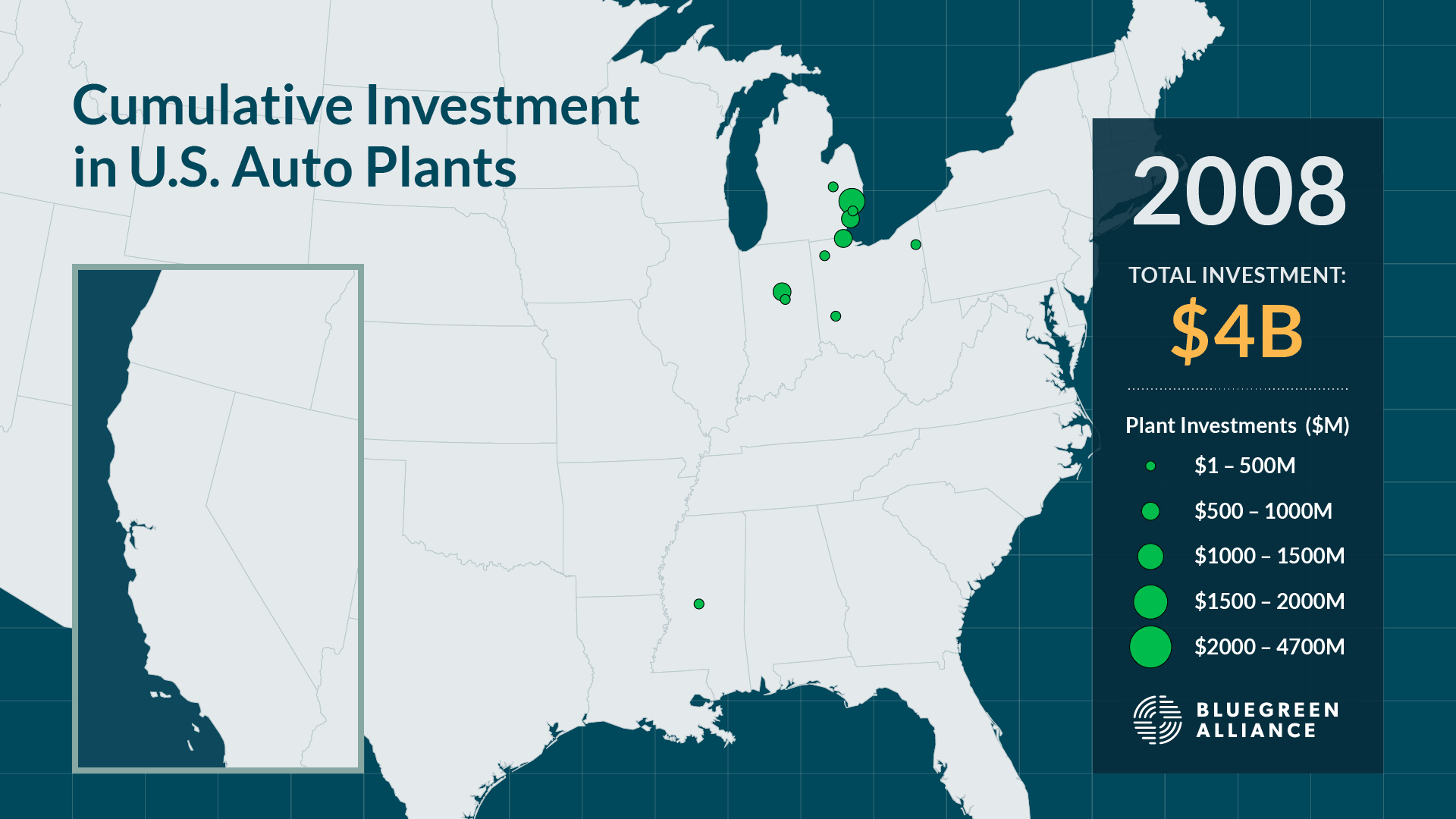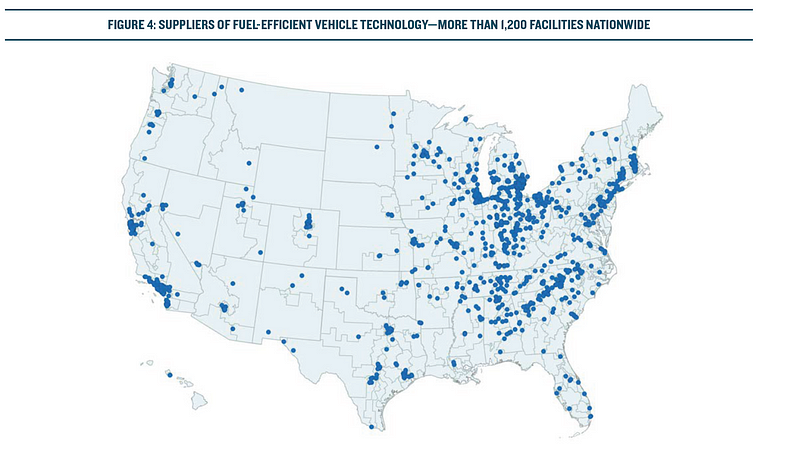Rolling back fuel economy standards will hit the brakes on innovation, investment in new technology, and the jobs of the future
The U.S. Environmental Protection Agency and the National Highway Traffic Safety Administration have just released their proposal to roll back the nation’s successful, world-leading vehicle fuel economy and emissions standards.
Over the last decade — and while meeting our current strong standards — the U.S. has seen a transformation in the automotive sector. The industry has returned to profitability, achieved record sales, and brought back thousands of jobs building innovative vehicles, parts, and materials all across the country.
The plan the agencies released today would hit the brakes on this investment and job creation, likely sending the next generation of vehicle innovation and jobs overseas.
Because of strong fuel economy standards, any vehicle a consumer chooses to buy — whether a car, truck, or SUV — gets more efficient every year. That means fewer fill-ups and big savings at the pump. While pocketbook savings are probably the most obvious benefit of strong standards to consumers, the standards are also resulting in major cuts in pollution and are one of the biggest steps we’re taking to address climate change. But these aren’t the only benefits. In addition, the benefits of having strong fuel economy standards in place have rippled throughout our economy, boosting investment in the automotive and manufacturing sectors and adding jobs.
In BlueGreen Alliance’s report Driving Investment, our researchers identified a total of $76 billion in new and promised automaker investment in the nation’s automotive plants since 2008. You can see that investment grow here.

While some of that $76 billion represents business-as-usual investment, a significant portion is new, added, or enhanced investment in the innovative technology and manufacturing processes to meet the nation’s commonsense fuel economy and greenhouse gas standards.
The plan the agencies released today would hit the brakes on this investment and job creation, likely sending the next generation of vehicle innovation and jobs overseas.
The push to build the next generation of efficient vehicles has also increased demand for the parts and materials that make cars, trucks, and SUVs more efficient. When we looked at what this means for American workers, we found that there are currently at least 288,000 workers in 1,200 factories and engineering facilities in 48 states employed building the innovative engines, transmissions, and propulsion systems, advanced components and electronics, lightweight high-strength materials, and many other technologies that make today’s vehicles more fuel efficient.

Weakening the standards as the administration has proposed would put these investments and jobs at risk. It also threatens to damage the nation’s competitiveness in the global marketplace, ceding leadership in the development of the next generation of automotive technology — and the jobs that go with it — to other countries that are still racing ahead.
Adopting the proposal released by the administration would be a mistake, plain and simple. The administration should reconsider this flawed proposal and instead work to develop a plan that delivers commonsense, long-term, standards — coordinated and agreed upon with California and other states — that sustain America’s leadership in technology and manufacturing, protect consumers and the environment, and protect and grow jobs here, not send them abroad.